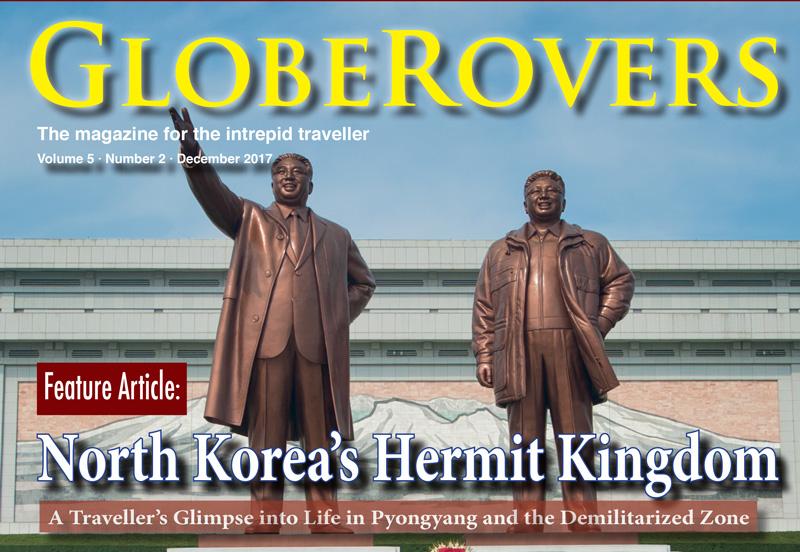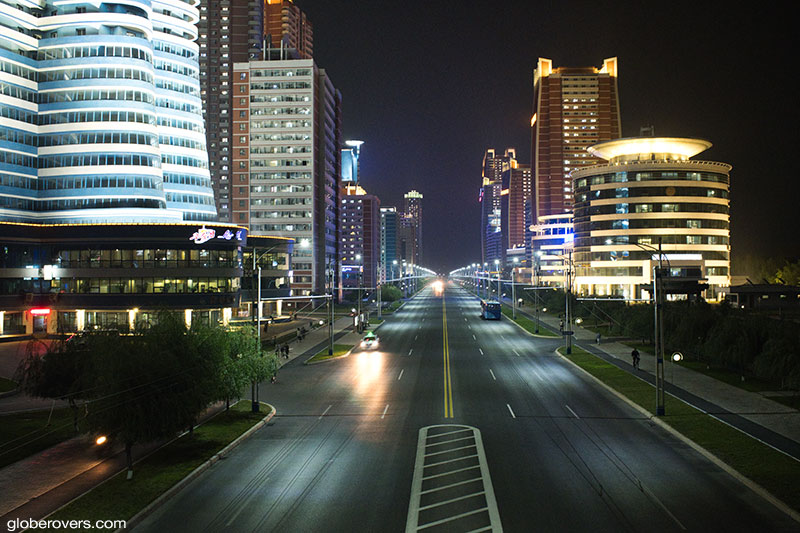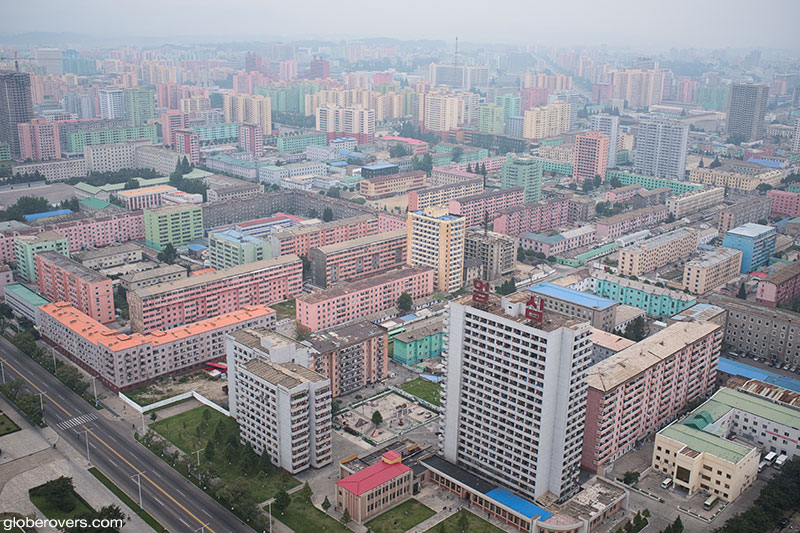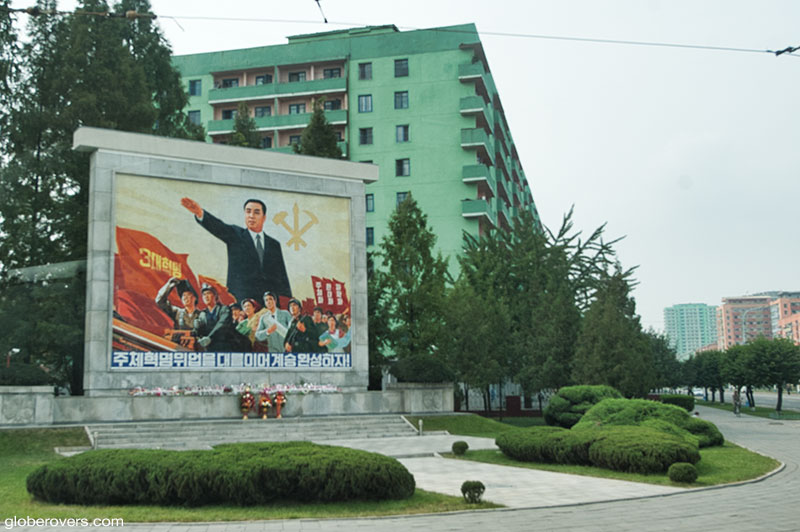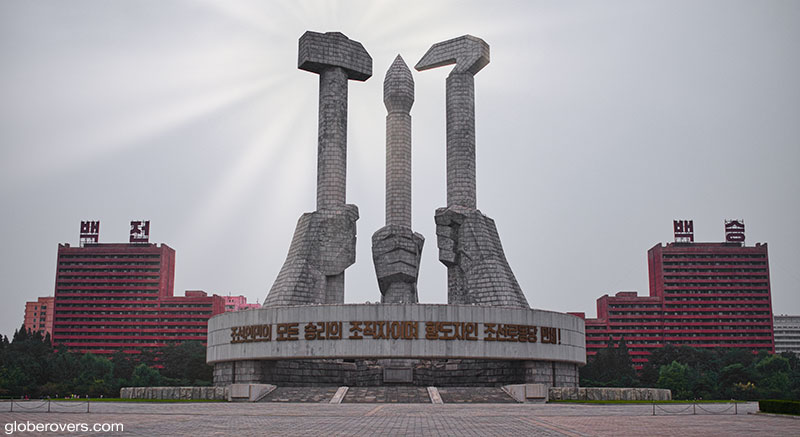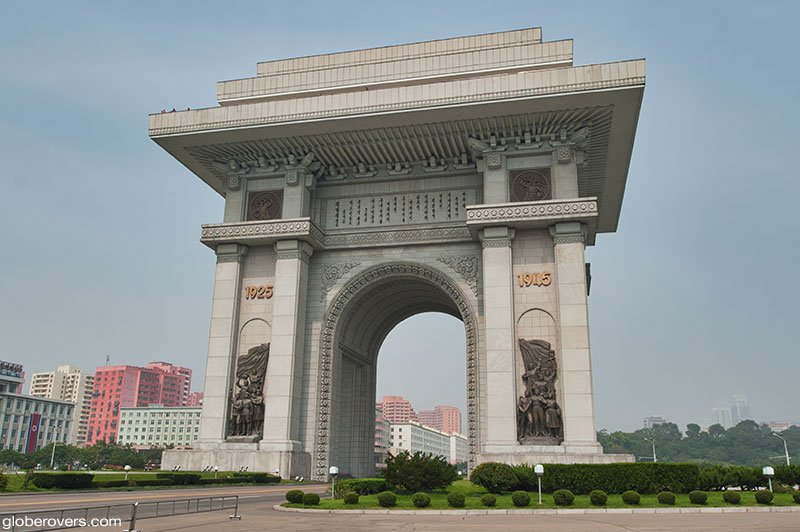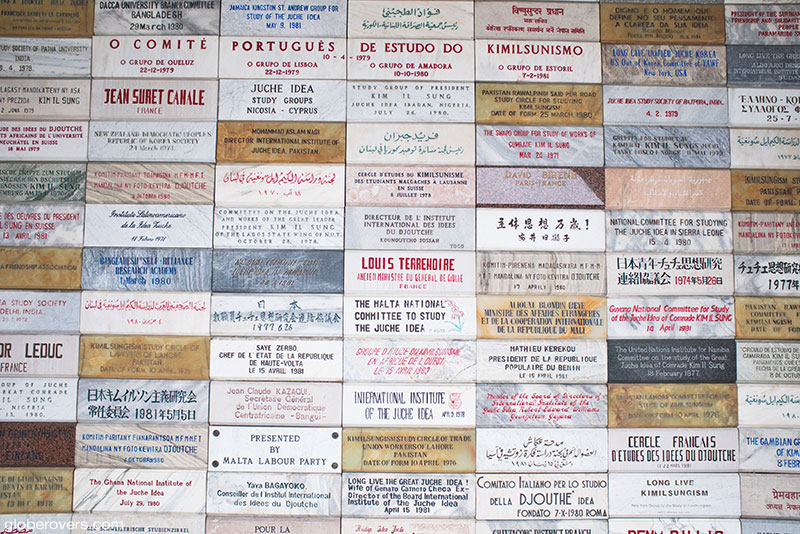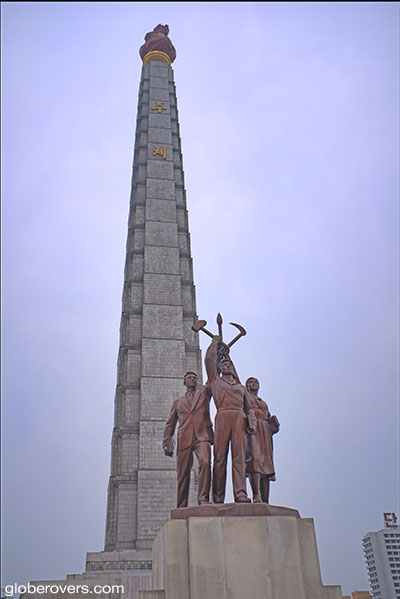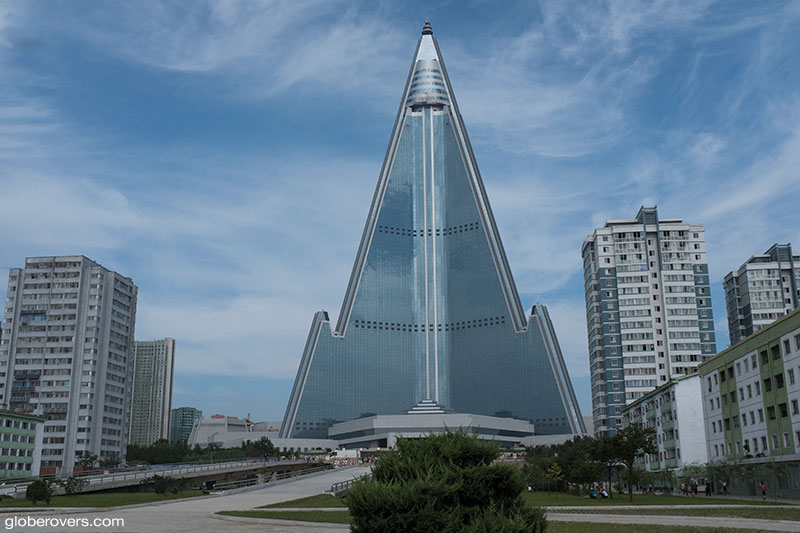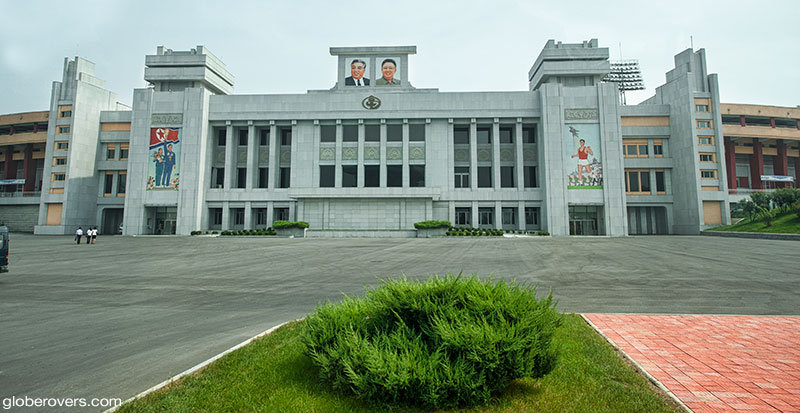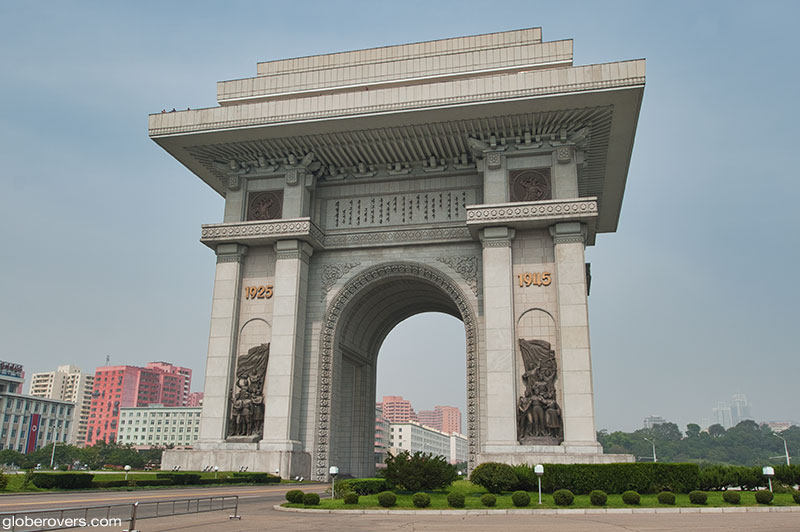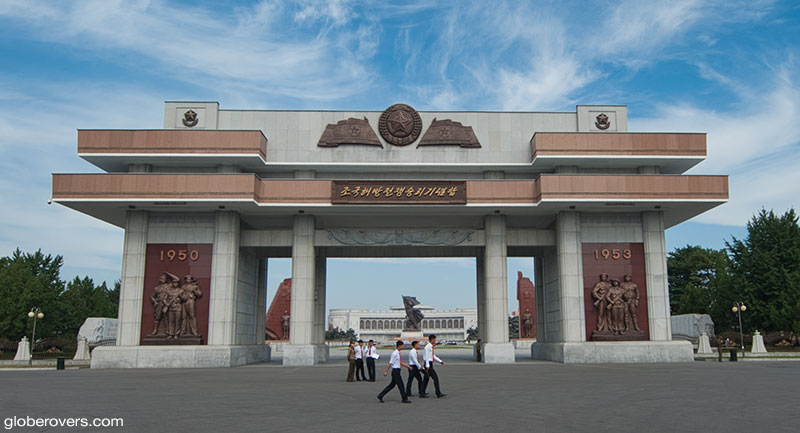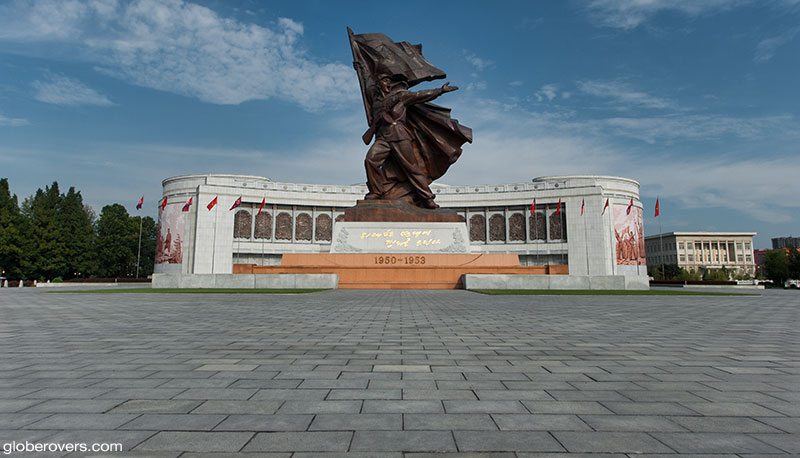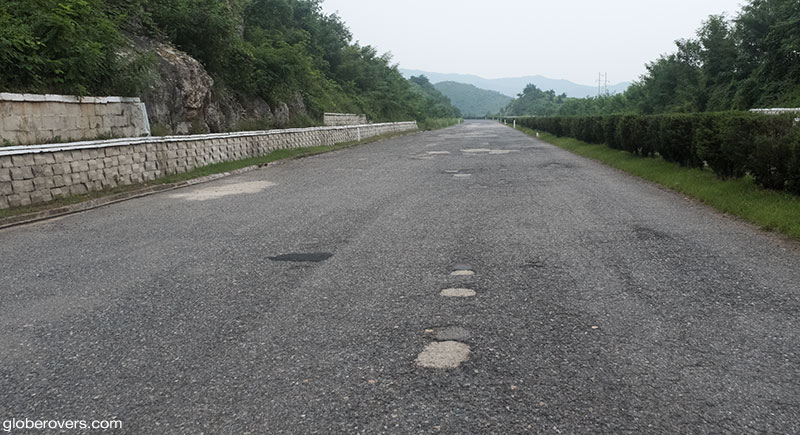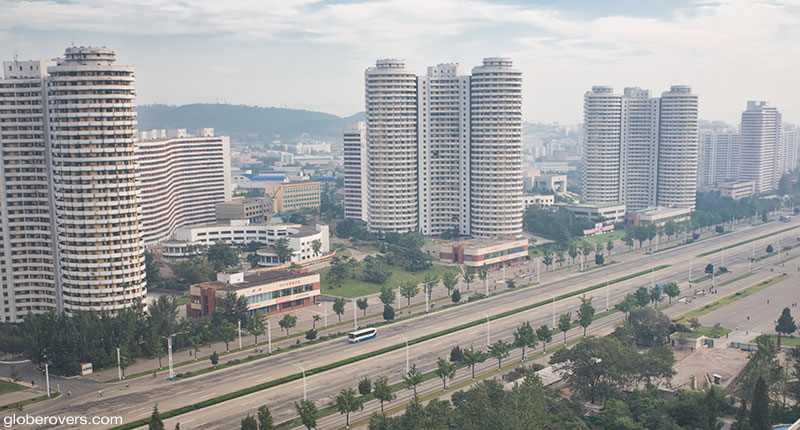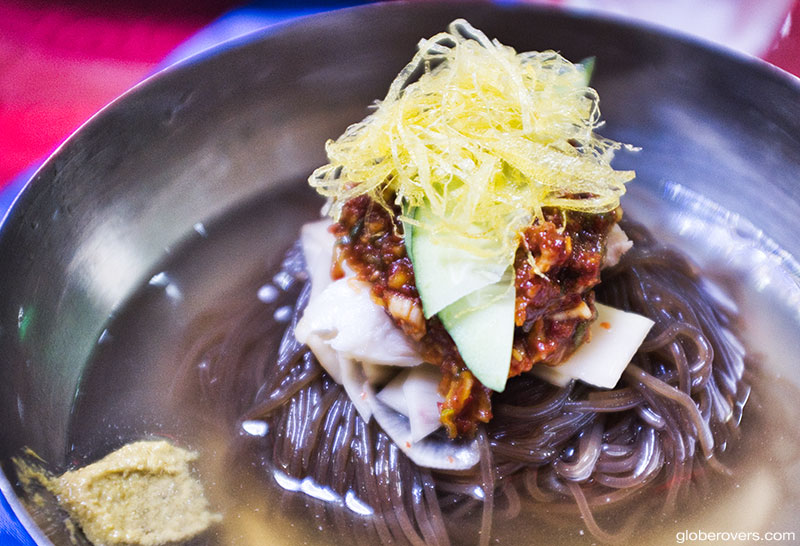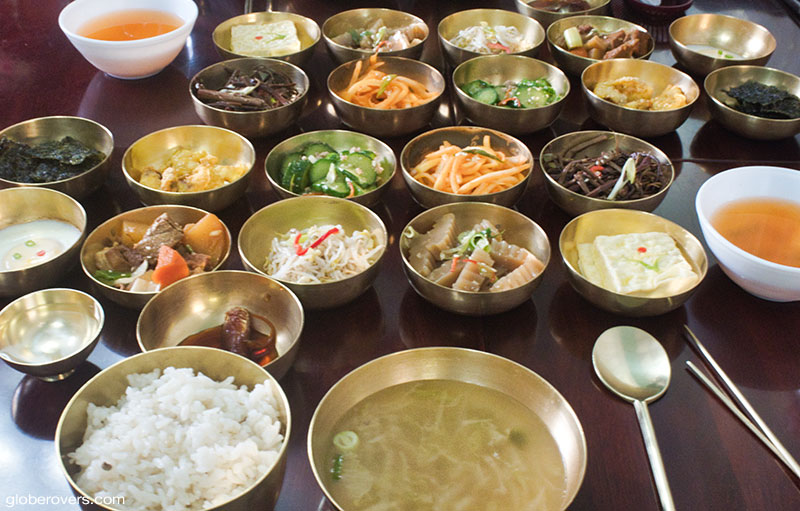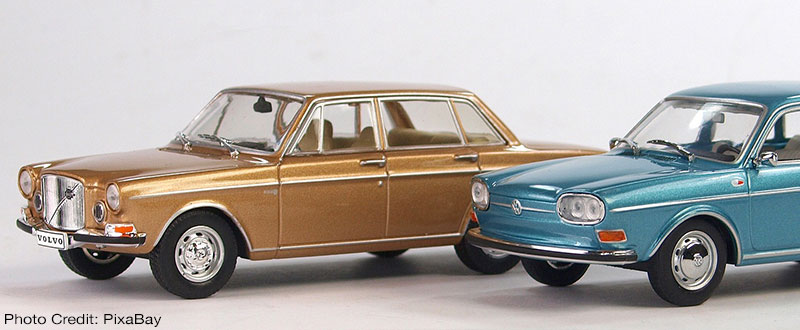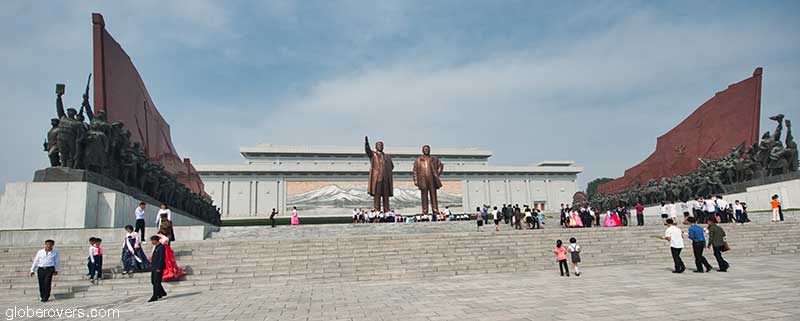
North Korea is a “hermit” country that willfully walls itself off from the rest of the world – based on its Juche Ideology. North Korea is also a “cult hermit dictatorship” due to its excessive admiration for the Kim Dynasty strictly enforced on its people.
Here are my Top 10 weird facts about North Korea which
This article appears in GlobeRovers Magazine, Dec 2017
Click HERE
1. Pyongyang is only for the elite
Pyongyang, the capital of North Korea, is by far the most populated with over three million residents. The second biggest city has 559,000 souls.
When travelling around Pyongyang, there are no obvious signs of poverty or malnutrition. Overweight school kids are common. The people look happy while enjoying their picnics in the parks. Couples dressed up pose for cameramen with expensive Japanese equipment.
Fact is: Pyongyang is not representative of North Korea. City residents are the privileged elite who live worlds apart from ordinary citizens. They are beneficiaries of a class system based on being born into a privileged family with a history of political loyalty or bloodline linked to the Kim Dynasty. Kim Jong-un takes special care of the elite!

Streets of Pyongyang 
View from the Juche Tower over Pyongyang
2. Propaganda is everywhere
Propaganda is everywhere: in the media; along the roadside; on the buildings; in the trains; even on the TV when foreign visitors are having breakfast!
Propaganda focuses on the great leaders and their miracles, the need to unify the Koreas under the Kims, how America started the war, how strong the North Korean military is, and how they will destroy the “American Imperialists”. Propaganda pieces make great photos and it is fun to decipher the cartoon designs. North Koreans have a sense of humour!

Propaganda billboards on the streets of Pyongyang, North Korea 
Propaganda posters in Pyongyang, North Korea
3. Statues of the “Dear Leaders” are everywhere
With well over 500 large statues erected in honour of the great leaders, and an additional 35,000+ smaller statues and busts (though who knows exactly?), it could take a long time to visit each statue, if you really desire to accomplish such a feat.
The two 22.5 metres tall statues at Pyongyang’s Mansudae are the tallest of them all.
The Mansudae Art Studio, with about 4,000 staff, create large statues for export to dictators around the world.
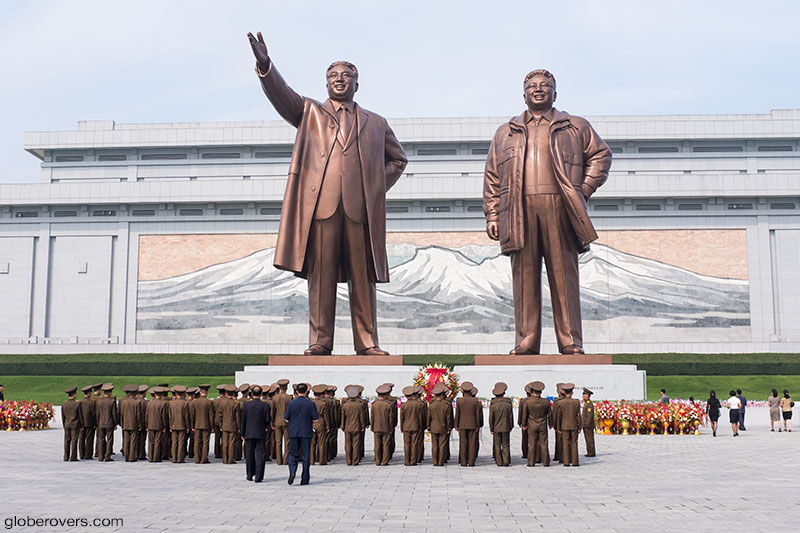
Korean Revolution Museum, Pyongyang
4. Monuments are everywhere
Along with the multitudinous small, big and very big statues, come innumerable monuments, arches, and towers. Hard to even guess the number of monuments all over the country. Apparently many are at risk of vandalization by starving Koreans!
Among the most prominent in Pyongyang is the Tower of the Juche Ideology, Triumphal Arch, Monument to the Korean Workers Party, Arch of Reunification, Chollima, Monument to the Victorious Fatherland Liberation War and the list goes on and on and on.

Monument to Party Founding, Pyongyang 
Arch of Triumph, Pyongyang, North Korea, DPRK
5. Guided by Juche Ideology and not Communism
North Korea is not a communist state. Kim Il-sung decided to create his own personal national ideology which he called “Juche”. In 1972, Juche replaced Marxism–Leninism though Juche was explained as a “creative application” of communism.
In the constitutional revision of 1992 and in 1998 (4 years after his death in 1994), Kim’s personal cult ideology came into full force, so all reference to Marx-Leninism was removed. The Juche ideology emphasizes political, economic, and military self-reliance.

82 “friendship tribute” plaques from foreign supporters and Juche study groups against the wall of the interior entrance of the Juche Tower along the Taedong River, Pyongyang 
Juche Tower, Pyongyang
6. Everything is “world’s biggest and the best”
North Korea loves boasting about having the biggest and the best! Several structures are indeed the biggest or tallest in the world, but many of the records used for propaganda are often
Guides and minders love mentioning “this building was built in the shortest time for any building of its size anywhere”. Many structures are embedded with special meaning, such as the Juche Tower containing 25,550 blocks, one for each day of Kim Il-sung’s life. Pyongyang’s May Day Stadium is indeed the biggest in the world with 114,000 seats.
Fact is (and guides love mentioning it with a grin): The
They must expect a huge influx of international visitors. Fact is: With 115,000 seats the Rungrado 1st of May Stadium (not the one in the photo below which has 50,000 seats), is the biggest stadium in the world. Fact is: The Pyongyang Arch of Triumph is modelled after the Arc de Triomphe in Paris, but is 10 metres (33 ft) taller.

Ryugyong Hotel, Pyongyang 
Biggest stadium in the world – Kim Il Sung Stadium, Pyongyang 
Pyongyang Arch of Triumph which is taller than the Paris Arc de Triomphe
7. Museums are masterpieces
North Korea has no shortage of museums, and as expected, propaganda is their focus. Though let us give the North Koreans credit: they are masters in the art of creating statues, monuments, and museums. The museums in Pyongyang are nothing less than masterpieces, unrivalled in grandeur and detail. The Victorious Fatherland Liberation War Museum is one such brilliant masterpiece.
Others include the Korean Art Gallery, Korean Revolution Museum, Central History Museum, Jonsung Revolutionary Museum, Mansudae Art Studio Gallery, and more!

Entrance gate to the Korean War Museum, Pyongyang 
Korean War Museum, Pyongyang 
Hotel Ryugyong and the Korean War Museum, Pyongyang
8. Wide grandeur roads but no traffic
The lonely extra-wide, poorly maintained, highways of North Korea are the face of the 3% of paved roads, compared to the 92% of paved roads in South Korea. While most North Koreans don’t have the financial means to afford a vehicle, even if they did have, restrictions are tight which means few would get permission to travel outside the capital.
Even travel within the city is restricted. The only traffic on highways outside the city are official vehicles and those of chaperoned foreign travellers. Pyongyang has a few vehicles on the road, and no traffic jams.

Wide and deserted road between Pyongyang and the South Korea border when it terminates. 
Wide and deserted streets of Pyongyang
9. Fancy cuisines for tourists and the elite
It is hard to think about the cuisines of North Korea when the fact is that most people barely have anything nutritious to eat. Staple foods vary by region, but meals often include cold noodles (Naung-myon), tofu, short-grain rice and porridge.
If lucky, they may eat poultry, beef and seafood. Side dishes, including kimchi, are tangy, salty, or spicy and are often fermented to add taste. Restaurants seem to be limited in Pyongyang, though tourists are shuttled around grand “tourist restaurants” where they sometimes get to mingle with the local elite.

North Korean National Food – Cold Noodles, Pyongyang 
Interesting food, Pyongyang 
Typical Korean food, Pyongyang
10. A 1,000 Volvos never paid for
Over the years, long lists of bizarre facts about North Korea have been compiled. While it is hard to verify the authenticity of all the claims, in North Korea anything bizarre is normally bizarrely true. Such is the case with the fact that in the 1970s, under the rule of Kim Il-sung, the North Korean government purchased 1,000 Volvo 144 GL’s from Sweden.
The cars were delivered but never paid for. Apparently, the total unpaid bill for Volvo and other Swedish firms currently amounts to about US$330 million! These Volvos are still on the roads!

Volvo cars – dilvered but never paid for!

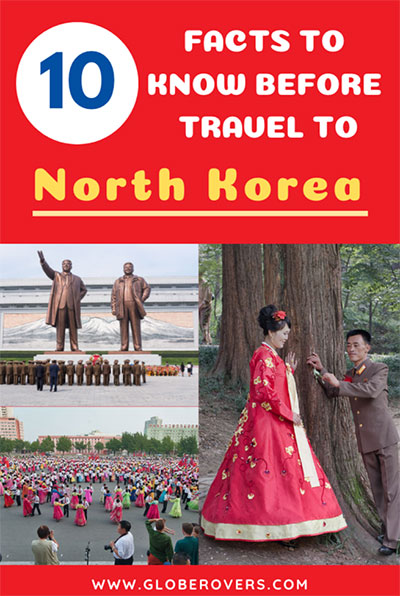

Blog post and photos by Peter who has been travelling almost full-time since 2005 and has been to over 122 countries. He visited several countries, such as Japan, more than 20 times. Peter is Editor-in-Chief and Publisher of GlobeRovers Magazine, an independent travel magazine focused on intrepid destinations.

